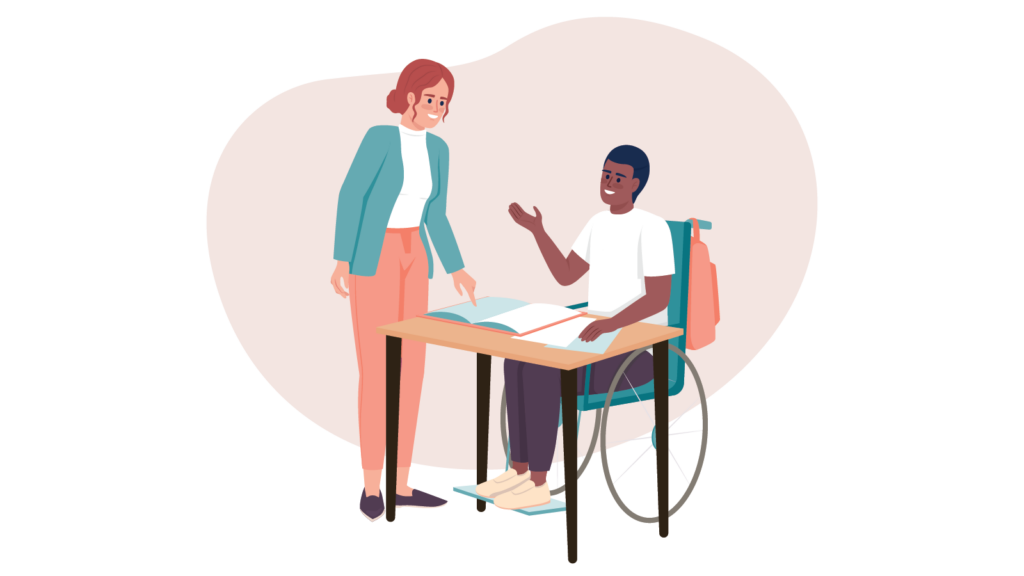Preparing Inclusive Classrooms for Success
As inclusion grows within our classrooms, policymakers must better equip general education teachers while also increasing retention of special education teachers.

My classroom was decorated. Open house was a success. The first week of school plans were finalized. I thought I was prepared for a successful first year as a fourth-grade teacher. But within the first week of the school year, I discovered that my teacher preparation program left me woefully underprepared to support my students.
I won’t sugarcoat it — those first few months were rough for everyone in my classroom. Most days included multiple meltdowns from several different students. These moments were not the result of inherent characteristics of my students’ disabilities, but rather an appropriate reaction to not having their needs met by me, their teacher.
On my roster of 22 students, eight received special education services through an Individualized Education Program (IEP) and one received accommodations through a 504 Plan. Let me be clear, my students’ disabilities were not the issue — my deficits as a general education teacher were. I graduated from the best teacher preparation program in my state but was severely unprepared to meet the needs of my students, especially my students with disabilities.
The classroom environment was chaotic, and I felt increasingly inadequate as a teacher — my students were not able to learn to their full potential because I did not know how to teach them. I did not have the skills or tools necessary to provide a safe and accommodating classroom environment that adequately supported the needs of my diverse learners.
My experience as a general education teacher trying her best to support students with disabilities with little to no knowledge about disabilities and how they manifest in the classroom is not uncommon. Even though students with disabilities are increasingly placed in general education classrooms, many teachers remain ill-equipped to fully support them.
The placement of students with disabilities in general education classrooms is commonly referred to as inclusion and has increased as a practice over the last decade. In 2022, 67% of students with disabilities were taught in general education classrooms for at least 80% of the school day, a 6% increase from 2012. Inclusion is regularly identified as the Least Restrictive Environment (LRE) used to provide a Free and Appropriate Education (FAPE) to students with disabilities.
In inclusive settings, students with disabilities experience large academic gains, while non-disabled students experience diverse learning environments. These benefits can only be achieved when general education teachers are properly trained and equipped to support students with disabilities.
In response to the increase of students with disabilities in general education classrooms, some states have revamped their teacher preparation programs to include coursework related to supporting students with disabilities — about half of U.S. states require pre-service general education teachers to take at least one course related to students with disabilities. While this is a step in the right direction, it is important to remember that all students with disabilities deserve teachers who are properly trained to support their needs.
While I received no formal instruction related to students with disabilities during my teacher preparation program, I benefitted from co-teaching with a certified special education teacher. My co-teacher was truly a superstar. She joined my classroom for half the day to help support our students with disabilities, and through co-teaching with her, I was able to better understand my students’ disabilities and how to properly provide the accommodations in their IEPs.
I started noticing that small changes on my end had extremely beneficial impacts on my students. For example, I began to understand how to use student data to identify specific times of the day when a student needed a break. Providing these intentionally timed breaks allowed my students to decompress before transitioning to a new task. Additionally, utilizing visual help boxes allowed my students who struggled with executive functioning to organize their tasks in manageable ways. Slowly but surely, I was learning how to support my students.
With the help of my co-teacher, I was able to use the appropriate accommodations and instructional techniques at the right time. Providing these supports helped my students to stay regulated in the classroom — indicating that my students were finally getting the individualized support they needed. As the year progressed, it started to look more and more how my optimistic, bright-eyed, first-year-teacher-self imagined that first year to be.
The collaboration between general education teachers and special education teachers is essential for the success of all students. Unfortunately, due to the high turnover of special education teachers and the lack of knowledge general education teachers have related to disabilities, it is often challenging to foster successful co-teaching environments.
As rates of inclusion increase in U.S. public schools, policymakers must better equip general education teachers while also increasing retention of special education teachers. To increase the preparedness of general education teachers to support students with disabilities, state legislatures can review their general education teacher certification requirements and add required coursework related to teaching students with disabilities where necessary. Additionally, to increase the retention of special education teachers, policymakers can provide financial incentives for hard-to-staff special education positions and ensure manageable caseloads.